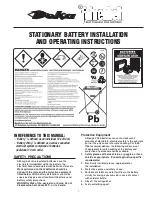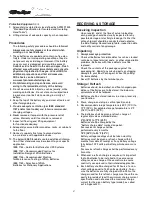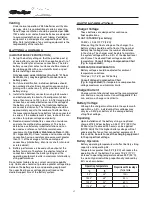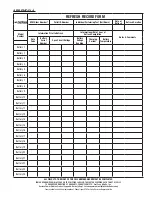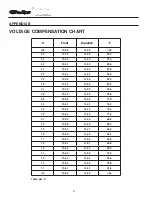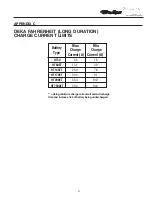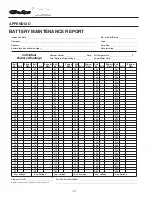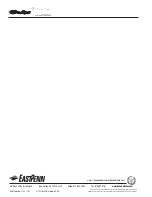
2
®
Protective Equipment cont.
7. Adequately insulated tools (as defined by ASTM F1505
“Standard Specification for Insulated and Insulating
Hand Tools”).
8. Lifting devices of adequate capacity, when required.
Procedures
The following safety procedures should be followed:
Always wear safety glasses or face shield when
working on or near batteries.
1. These batteries are sealed and contain no free elec-
trolyte. Under normal operating conditions, they do
not present any acid danger. However, if the battery
case or cover is damaged, acid could be present.
Sulfuric acid is harmful to the skin and eyes. Flush
affected area with water immediately and consult a
physician if splashed in the eyes. Consult SDS for
additional precautions and first aid measures.
SDS sheets can be obtained at
www.eastpennmanufacturing.com
2.
Prohibit smoking and open flames, and avoid
arcing in the immediate vicinity of the battery.
3. Do not wear metallic objects, such as jewelry, while
working on batteries. Do not store un-insulated tools
in pockets or tool belt while working in vicinity of
battery.
4. Keep the top of the battery dry and clear of tools and
other foreign objects.
5. Provide adequate ventilation
(per IEEE standard
1187 and/or local codes)
and follow recommended
charging voltages.
6.
Never
remove or tamper with the pressure relief
valves. Warranty void if vent valve is removed.
7. Inspect all flooring and lifting equipment
for functional adequacy.
8. Adequately secure battery modules, racks, or cabinets
to the floor.
9. Connect support structures to ground system
in accordance with applicable codes.
10. The below IEEE Standards contain additional informa-
tion. Other standards may be relevant to your specific
application.
IEEE 1184 – Guide for Batteries for UPS Systems
IEEE 1187 – Recommended Practice for
Installation Design of VRLA Batteries
IEEE 1188 – Recommended Practice
for Maintenance, Testing, of VRLA Batteries
IEEE 1189 – Selection of VRLA
Batteries for Stationary Applications
RECEIVING & STORAGE
Receiving Inspection
Upon receipt, and at the time of actual unloading,
each package should be visually inspected for any
possible damage or electrolyte leakage. If either the
entire shipment should be conducted and noted on
the bill of lading. Record receipt date, inspection date
and notify carrier of any damage.
Unpacking
1.
Always wear eye protection.
2. Check all batteries for visible defects such as cracked
containers, loose terminal posts, or other unrepairable
problems. Batteries with these defects must be
replaced.
3. Check the contents of the packages against the
packaging list. Report any missing parts or shipping
damage to your East Penn agent or East Penn Mfg.
Co. immediately.
4. Never lift batteries by the terminal posts.
Storage / Refresh
Batteries should be installed, and float charged upon
delivery. If batteries are to be stored, the below re-
quirements shall be followed.
1. Batteries shall be stored indoors in a clean, level, dry,
cool location.
2. Store, charge, and ship in vertical position only.
3. Recommended storage temperature is 50°F (10°C) to
77°F (25°C). Acceptable storage temperature is 0°F
(-18°C) to 90°F (32°C).
4. The batteries shall be given a refresh charge at
regular intervals as detailed below:
0°F(-18°C) to 77°F (25°C)
Batteries shall be charged by the
“battery charge date” marked on pallet.
Successive recharges shall be
performed every 6 months.
78°F (26°C) to 90°F (32°C)
Battery voltage readings shall be taken monthly.
Batteries must be given a refresh charge within 3
months from date of receipt or if any battery voltage
falls below 12.72 volts per battery, whichever occurs
first.
Successive refresh charges shall be performed every
3 months.
5. Whenever a refresh charge is required, it’s important
that all batteries to be installed in the same series
string receive a charge at the same time to ensure
continuity once placed in their intended application.
6. Each battery shall be charged for 24 hours at a con-
stant voltage equal to 14.40 volts per battery. To en-
sure the batteries are fully charged within 24hrs, the
charger used for this refresh charge must have the ca-
pacity to provide at least the minimum charge current
specification and not exceed the maximum charge
current for the given battery type (model), as called
out in Appendix C.
Содержание fahrenheit
Страница 11: ...P a g e I n t e n t i o n a l l y B l a n k ...

